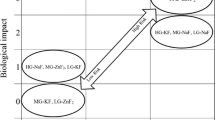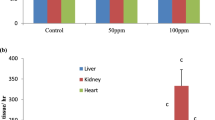Abstract
An excess of sodium fluoride (135 mg F/kg body weight) was given in a single oral dose to male Wistar rats. Effects were investigated of fluoride-induced acute kidney intoxication on the time-dependent variations of urine volume. Also, of urinary fluoride ion (F−), α-glutathione-S-transferase (α-GST), N-acetyl-β-d-glucosaminidase (NAG), and creatinine (CR) concentrations. Fluoride administration strongly affects these urinary biochemical indices. Of the several biomarkers studied, α-GST is particularly useful as marker of S3 proximal tubule damage. We found that α-GST shows the strongest and more durable changes as a result of the large dose of F− given to the experimental animals. Our results suggest that the toxic effect of F− on the kidney may be more pronounced in the proximal tubule than the glomeruli region, and that the disorder of the proximal tubule is more serious in the S3 segment than S1 or S2 segment. α-GST proved to be a useful marker for the early detection and long-term observation of proximal renal tubular injury resulting from F− intoxication. The animal model should help to establish guidelines for the treatment of industrial workers suffering from acute renal failure resulting from accidental exposure to fluoride.
Similar content being viewed by others
Author information
Authors and Affiliations
Additional information
Received: 22 January 1997 / Accepted: 21 August 1997
Rights and permissions
About this article
Cite this article
Usuda, K., Kono, K., Dote, T. et al. Urinary biomarkers monitoring for experimental fluoride nephrotoxicity. Arch Toxicol 72, 104–109 (1997). https://doi.org/10.1007/s002040050475
Issue Date:
DOI: https://doi.org/10.1007/s002040050475




